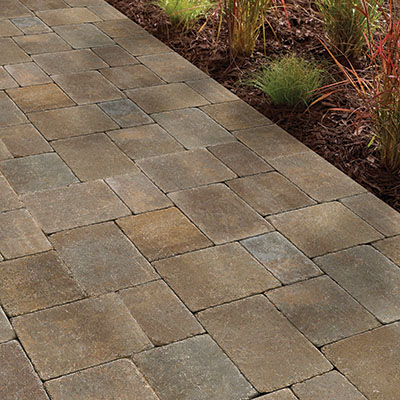Presenting Interlocking Pavers
The very first segmental roadways were built from the Minoans about 5,000 in years past. The Romans built the initial segmental interstate system, which was beyond the existing U.S. interstate highway system. Most would agree that paving stones offer an “Old World” beauty and charm, though the strength and robustness of interlocking pavers is often overlooked in The united states. This document will explain basic principles of interlocking pavers, and it’ll address common misconceptions about pavers.
You will need to know that a paving stone installation is an engineered system; pavers are merely an element of this technique. The components of an paving stone installation, in the bottom up, are: compacted sub-grade (or soil layer), Geotextile fabric, compacted aggregate base, bedding sand, edge restraint, pavers, and joint sand. Unlike cast in place concrete, interlocking pavers really are a flexible pavement. It is primarily the flexibility which allows point load coming from a truck or car tire to be transferred and distributed over the base layer on the sub-grade. As soon as the strain has reached the sub-grade, the burden has become spread more than a large area, and also the sub-grade doesn’t deform.
Concrete, conversely, can be a rigid pavement. Its function is merely to bridge soft spots inside the soil. Poured concrete will crack and break on account of loads, shrinkage, soil expansion, and frost heaving from the sub-grade. Concrete is amongst the most important materials in construction, but poured in position concrete produces a poor paving surface. The reason is , its relative inability to flex as well as low tensile strength. Fiber reinforcement and rebar can enhance the tensile strength of concrete, but cracking and breaking are inevitable.

Modular paving stones are usually made from hardened precast concrete or kiln-fired clay. Properly installed pavers are interlocked, so lots on one paver is spread among several pavers and finally transferred over the first layer. Factors that affect interlock are paver thickness, paver shape, paver size, joint widths, laying pattern, and edge restraint. Most paver manufacturers provide a lifetime warranty when their products are installed by a professional. Gemstone like Flagstone and Bluestone just isn’t suited to flexible paving, and they are typically mortar-set on the concrete slab. Because interlocking pavers are joined with sand (as opposed to mortar), they may be uplifted and replaced inexpensively. For instance pavers might be uplifted to access underground utilities and reinstated when effort is complete.
Paving system designs are based on variables offering soil make-up, anticipated load stress, climate, water table, and rainfall. The type of material useful for aggregate base and bedding sand vary geographically. Soils which are full of clay and loam are unsuitable for compaction and should not be utilized for base material; when this happens a graded crushed stone is substituted. Proper compaction in the sub-grade and base materials are important to the long-term performance of your paving system, and in vehicular applications the compacted base depth could be over 12 inches. The perimeters of your paver installation have to be restrained to ensure interlock which will help prevent lateral creep. The most frequent types of edge restraint are staked-in plastic edge restraint, precast concrete curb, and cast-in-place concrete. Bedding sand materials include angular sand, manufactured sand, and polymeric sand.
To read more about Toronto interlocking please visit website: click for more.

Leave a Reply
You must be logged in to post a comment.